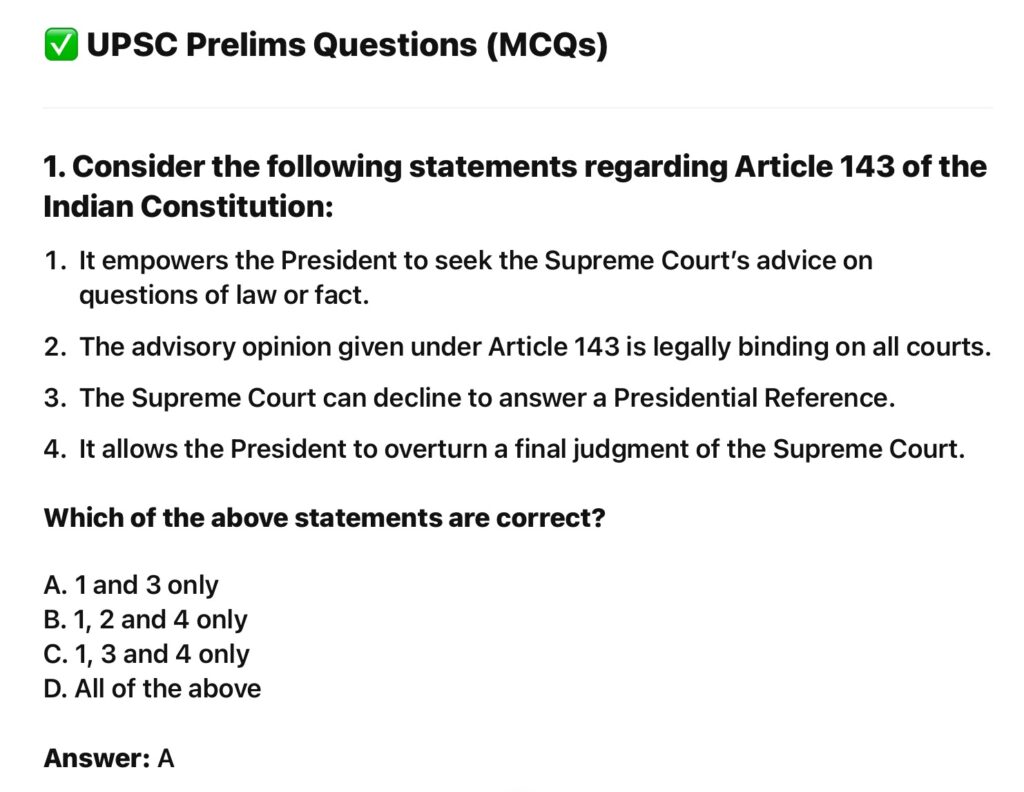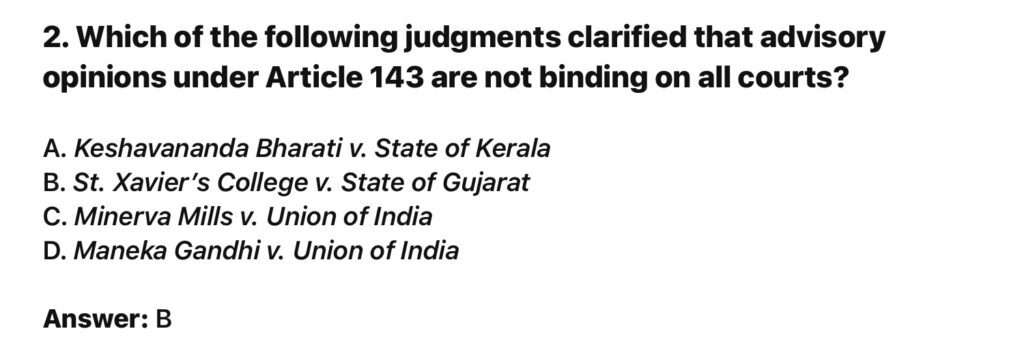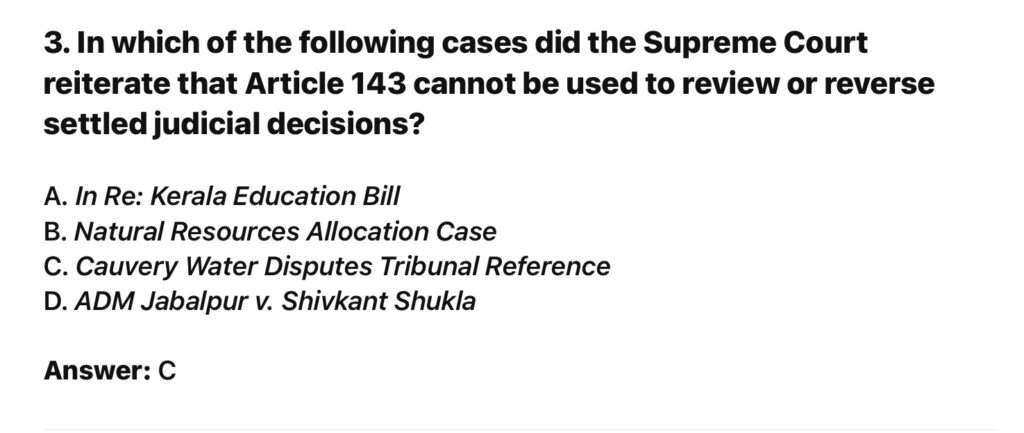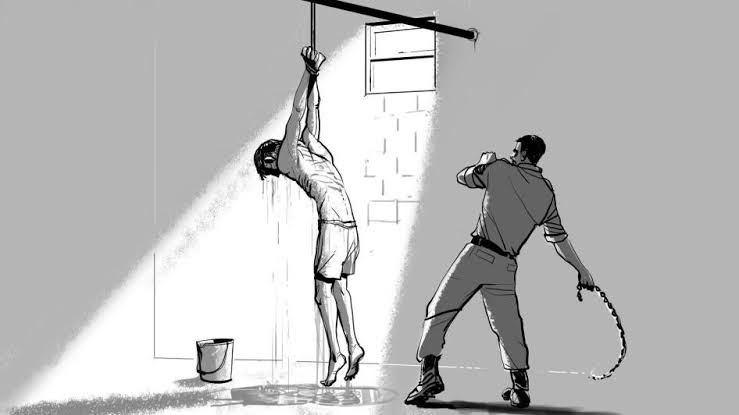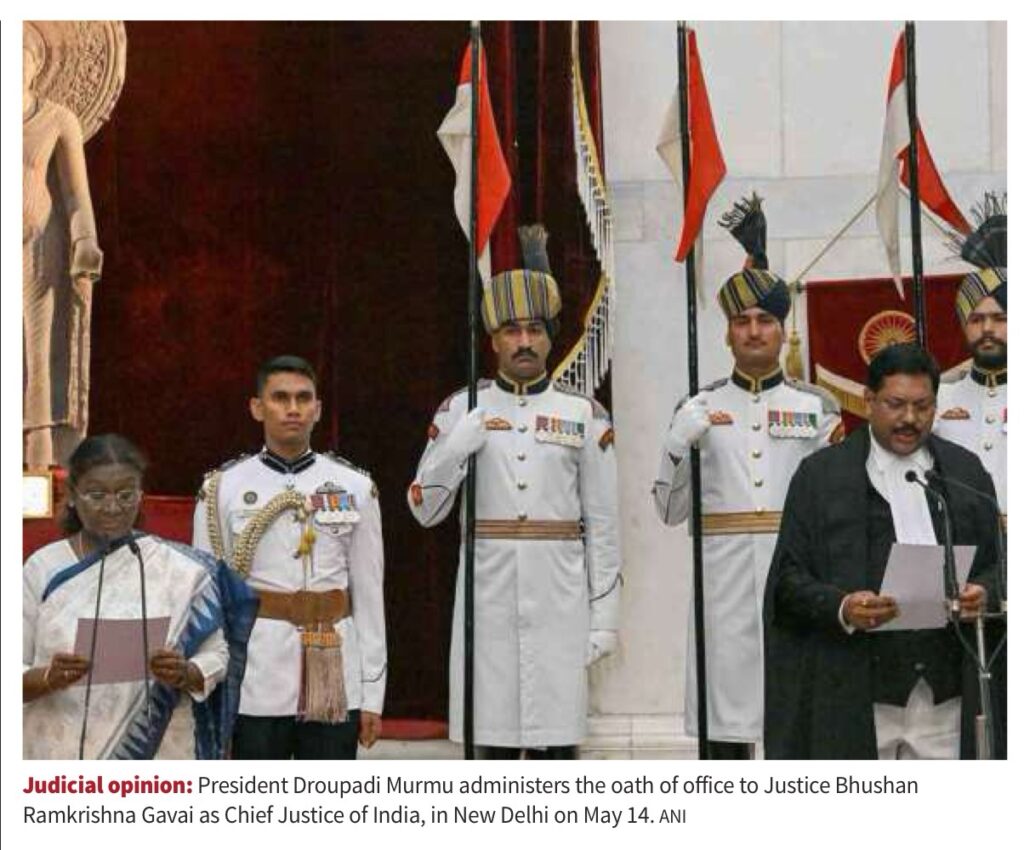
The article titled “Can Presidential Reference change a judgment?” examines the constitutional issue arising from President Droupadi Murmu’s recent invocation of the Supreme Court’s advisory jurisdiction under Article 143(1), following a controversial April 8 judgment. This judgment, stemming from a Tamil Nadu government petition, ruled that Governor R.N. Ravi’s inaction on bills re-passed by the State legislature was illegal and that Governors and the President must act within a reasonable timeframe on State bills. The Presidential Reference consists of 14 questions that broadly seek clarification on the roles and timelines for Governors and the President in dealing with such legislation.
The article explains that while the President can seek the Court’s opinion under Article 143, the Court is not compelled to accept every such Reference and may decline it, though with reasons. The scope of the Court’s response is confined strictly to the questions asked, and it does not function as a tool for reviewing settled judgments. Importantly, advisory opinions given by the Supreme Court under Article 143 are not binding, although they carry significant persuasive authority. This was established in past cases such as In re the Special Courts Bill (1978) and St. Xavier’s College v. State of Gujarat (1974). While some judgments like R.K. Garg v. Union of India (1981) have treated advisory opinions as binding precedents, this remains contested.
The Court has clarified that a Presidential Reference cannot be used to seek a review or overturn an existing judgment, such as the April 8 ruling. This was reiterated in the Cauvery Water Disputes Tribunal case, where the Supreme Court stressed that Article 143 is not a route to overturn established decisions. Instead, if a judgment needs to be reviewed or corrected, proper judicial review or curative petitions must be filed.
However, historical precedents show some nuanced exceptions. For instance, in 1998, the Court answered a Reference on judicial appointments by reaffirming the existing collegium system while not overturning any previous decision. This indicates that a Reference may influence future interpretations but does not directly annul past rulings.
In conclusion, while the Presidential Reference in this case may clarify doubts and aid the executive in understanding constitutional procedures, it cannot override or modify the binding nature of a Supreme Court judgment rendered under its original jurisdiction. The issue remains complex, with the binding force of advisory opinions still under legal debate.
✅ Value Addition for Mains
Article 143(1): Empowers the President to seek advisory opinion of the Supreme Court.
Binding Nature: Constitutionally contested; persuasive but not binding.
Important Cases: In Re the Special Courts Bill (1978) – Court may decline Reference.
St. Xavier’s College v. State of Gujarat (1974) – Advisory opinions not binding.
Cauvery Water Disputes Tribunal (1992) – Article 143 can’t be used to review decisions.
Natural Resources Allocation Case (2012) – Court clarified advisory role is not judicial review.
R.K. Garg v. Union of India (1981) – Treated advisory opinion as authoritative.
📝 UPSC Mains Questions
GS Paper 2 – Polity and Governance
1. “The advisory jurisdiction of the Supreme Court under Article 143 is a tool for constitutional clarity but not a mechanism for judicial review.” Critically examine this statement in light of recent Presidential Reference on the powers of Governors and the April 8 Supreme Court ruling.
(250 words)
2. Discuss the constitutional provisions regarding Presidential Reference to the Supreme Court under Article 143. To what extent are such advisory opinions binding on the executive and judiciary?
(250 words)
3. “Presidential Reference cannot be used as a backdoor to overturn settled judicial decisions.” Analyze this statement with relevant Supreme Court judgments.
(150 words)
4. Evaluate the judicial and constitutional implications of advisory opinions rendered by the Supreme Court. Refer to the Cauvery Water Disputes Tribunal case and the Natural Resources Allocation case.
(250 words)
